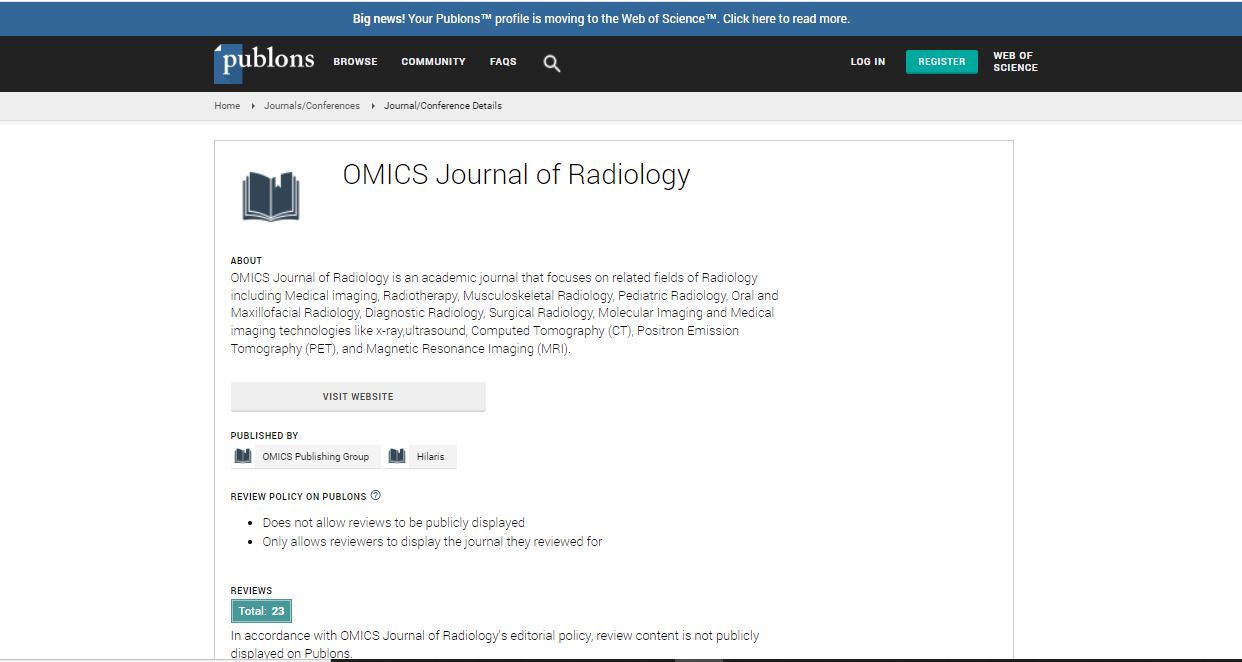Short Communication
Facing Radiologists' Reluctance of a Degraded although Diagnostic Image Quality of Low/Ultra-low-dose CT: Our Experience
Francesco Macri1,2*, Elina Khasanova1, Joel Greffier1, Gianfranco Gualdi2 and Jean Paul Beregi1
1Department of Radiology, Nîmes University Hospital, Medical Imaging Group Nîmes, France
2Department of Emergency Radiology, Umberto I Hospital, Sapienza University, Rome, Italy
- *Corresponding Author:
- Francesco Macri
Department of Radiology
Nîmes University Hospital
Medical Imaging Group Nîmes, France
Tel: +33.466.683.309
Fax: +33.466.683.308
E-mail: francesco.macri@chu-nimes.fr
Received Date: May 15, 2016; Accepted Date: June 01, 2016; Published Date: June 06, 2016
Citation: Macri F, Khasanova E, Greffier J, Gualdi G, Beregi JP (2016) Facing Radiologists' Reluctance of a Degraded although Diagnostic Image Quality of Low/Ultra-low-dose CT: Our Experience. OMICS J Radiol 5:224. doi:10.4172/2167-7964.1000224
Copyright: © 2016 Macri F, et al. This is an open-access article distributed under the terms of the Creative Commons Attribution License, which permits unrestricted use, distribution, and reproduction in any medium, provided the original author and source are credited.
Abstract
The radiological community is endeavouring to raise the awareness about the radiation-induced cancer. Computed Tomography (CT) is the main source of medical irradiation. Manufacturers provided efficient technological tools on CT to achieve a significant radiation dose reduction while maintaining a diagnostic quality of the image. Yet, the implementation of all these improvements allowing the low-dose (LD) and ultra-low-dose (ULD) CT imaging has difficulty to take hold. Radiologists do not easily accept to read images with a degraded image quality although diagnostic. As every cultural change, even in a radiological department the acceptation of the LD/ULD-CT imaging requests time. Constant meetings with substantial exempla and constructive discussions among radiologists, without abrupt modifications to the CT protocols in clinical practice, are the key to the success.

 Spanish
Spanish  Chinese
Chinese  Russian
Russian  German
German  French
French  Japanese
Japanese  Portuguese
Portuguese  Hindi
Hindi 
